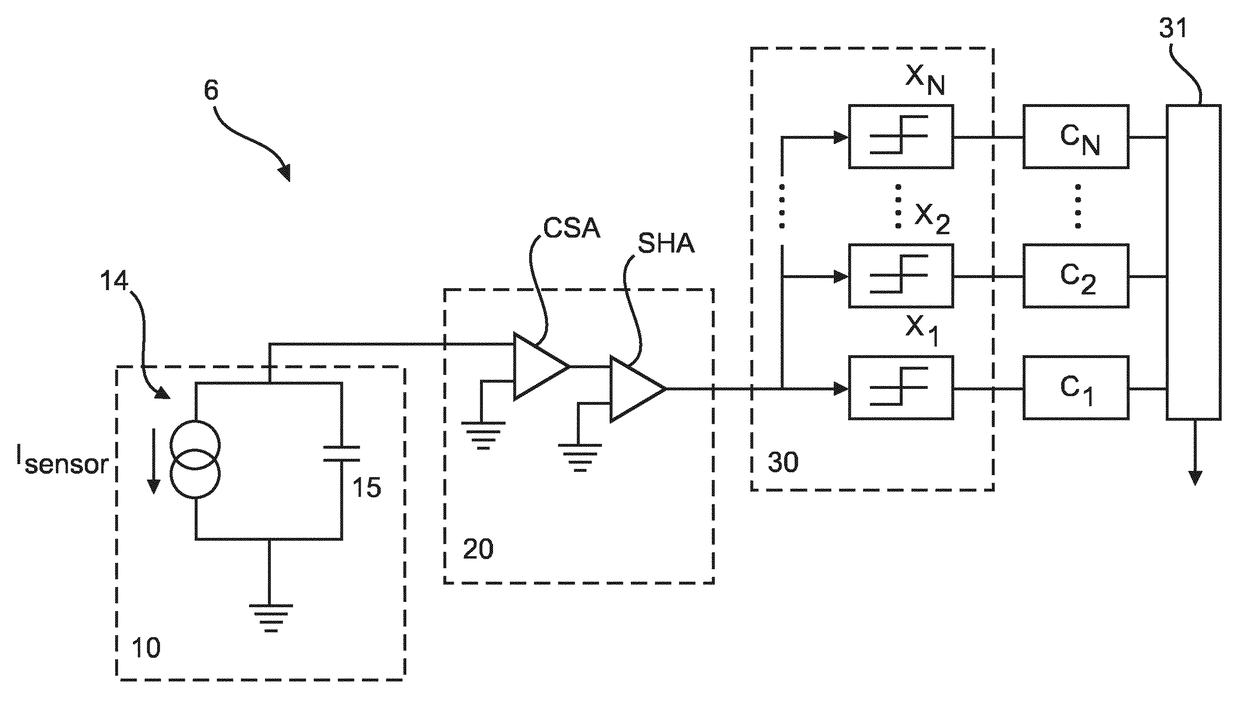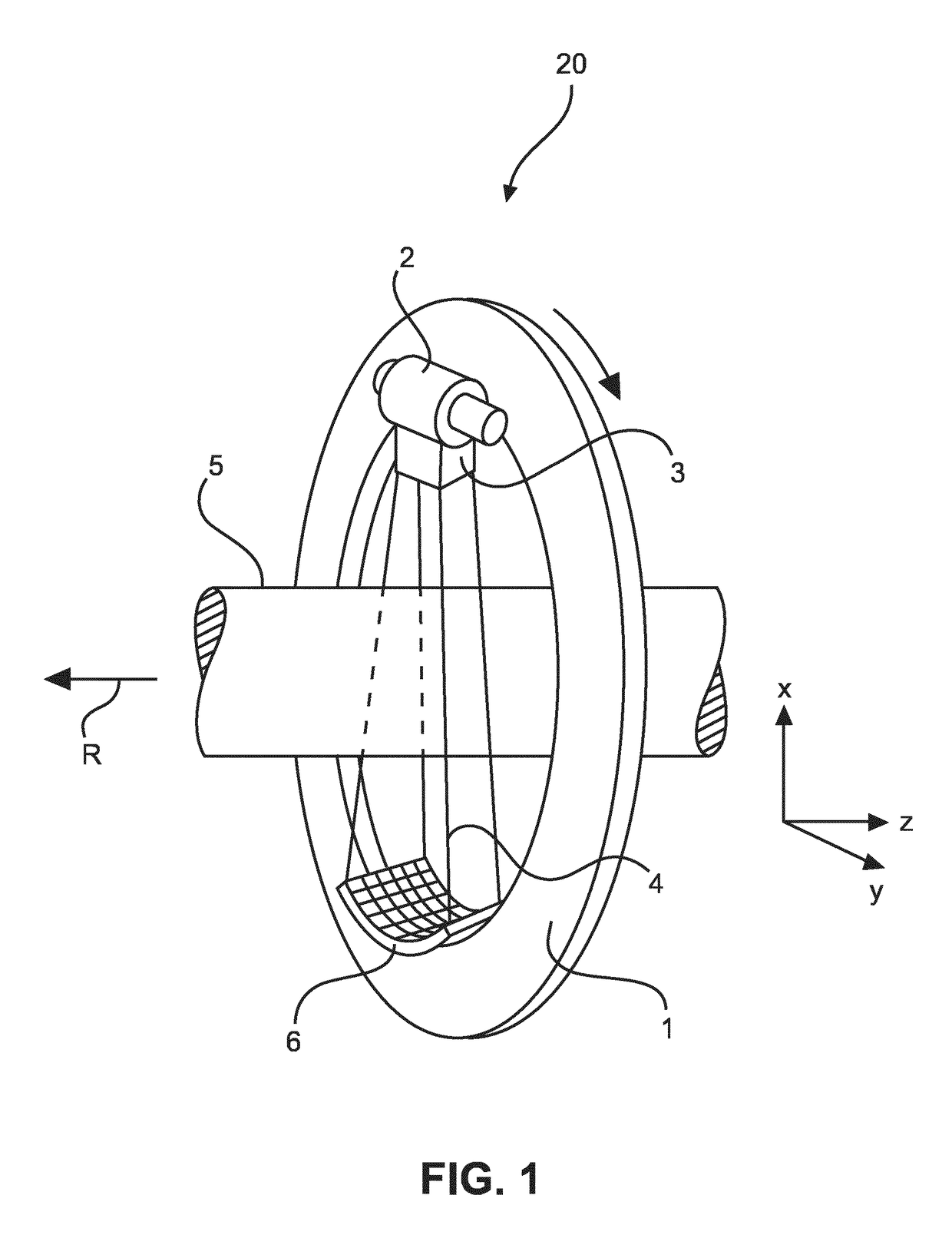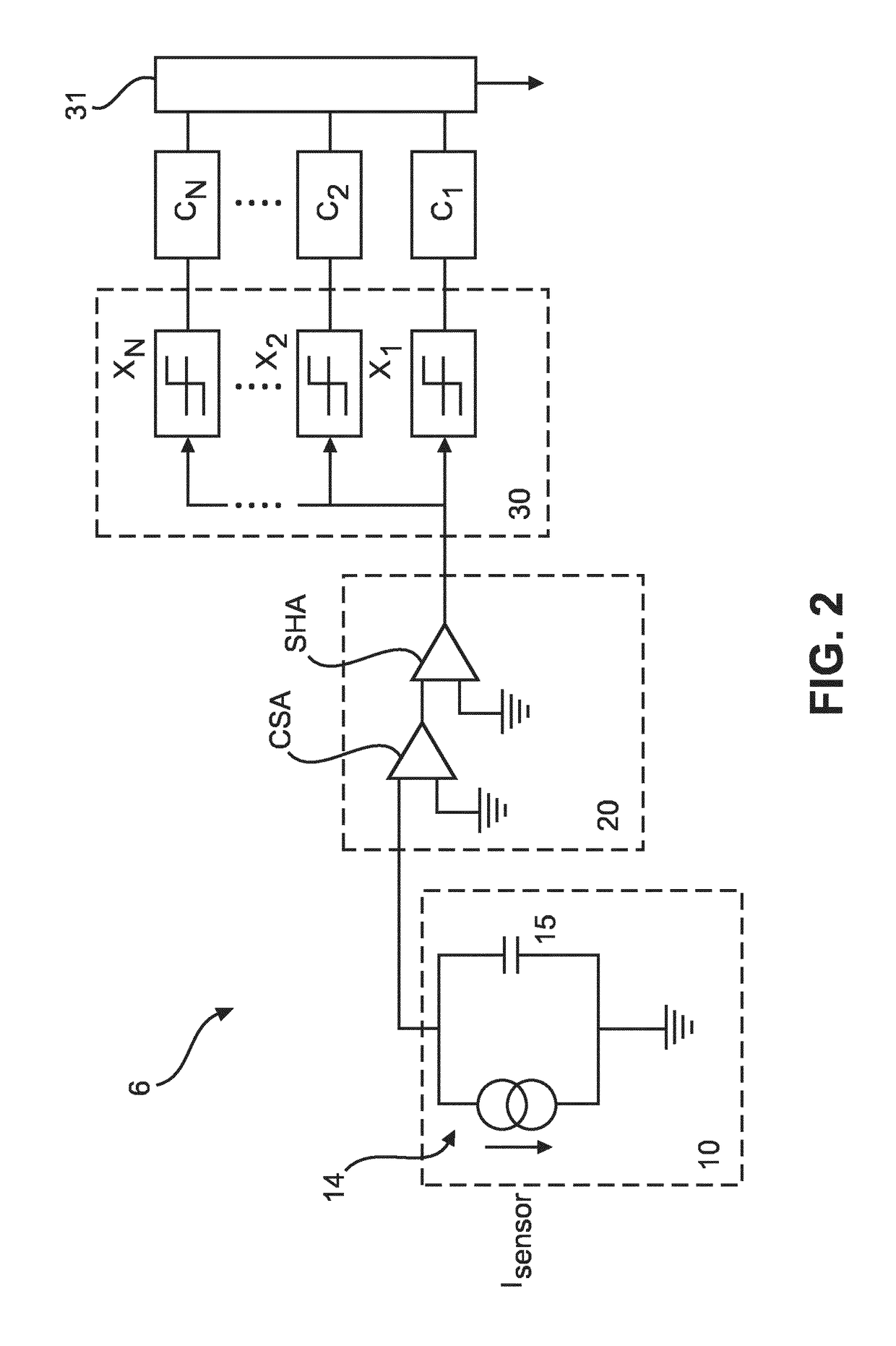Detection device for detecting photons and method therefore
a detection device and detection method technology, applied in measurement devices, instruments, radiation measurement, etc., can solve problems such as significant baseline estimates, significant time pickoff errors, and wrong registration of photon energy
- Summary
- Abstract
- Description
- Claims
- Application Information
AI Technical Summary
Benefits of technology
Problems solved by technology
Method used
Image
Examples
first embodiment
[0060] which is described herein below, it is proposed to derive from the measured total pixel current and the determined photo-conductive gain (known from measurements), the compensation current, which is then provided by a current source.
[0061]Photoconductors with not fully blocking contacts exhibit a photoconductive gain PCG, i.e. the measured current when irradiated is much higher than the current, which results, if only the electron-hole pairs generated by impinging photons (optical or X-ray or other types) are considered, which current is called photocurrent Iphoto.
[0062]This also applies to direct conversion semiconductors like cadmium telluride (CdTe) and cadmium zinc telluride (CZT) currently investigated as conversion material for X-ray detectors to count individual X-ray photons for human computed tomography (CT) imaging. Note that any direct converting material with different transit times for holes and electrons will be polarized at a certain flux, as charge with the lo...
second embodiment
[0100] which is described herein below, it is proposed to detect or monitor the BLR feedback signal in order to use this to determine the grade of polarization within the sensor for every read-out impinging photon of the detector.
[0101]The effect of polarization in semiconductor x-ray sensor materials (e.g. CZT or CdTe) degrade the spectral performance of the detector as the collected charge at the pixelated cathode is decreased with increasing amount of polarization. FIG. 4(b) of Bale and Szeles, Nature of polarization in wide-bandgap semiconductor detectors under high-flux irradiation: Application to semi-insulating Cd1-xZnxTe, Phys. Rev. B 77, 035205 (2008), illustrates the resulting shift of the measured spectrum at four increasing flux rates (tube currents). The distortion of a detected pulse height spectrum as a function of the tube current is depicted. With increasing flux or tube current the spectrum gets shrunk.
[0102]Therefore the detected pulse height of an x-ray event ins...
third embodiment
[0110] which is described herein below, it is proposed to include a circuit at the input of the baseline restorer circuit that ensures that any signal above the baseline level is ignored.
[0111]The use of cadmium zinc telluride (CZT) in spectral computed tomography (CT) applications requires mechanisms in order to compensate dynamic background current components, i.e. leakage currents (i.e. dark currents) and persistent currents caused by photoconductive gain PCG>1. To this end, for DC coupled readout schemes, baseline restorer circuits (BLR) are introduced to detect shifts of the baseline (BL) level at the output of the shaping element and inject / pull a current to correct for the aforementioned shift.
[0112]Baseline restorer circuits are typically implemented by using a peak detector that senses the baseline, a low pass filter (e.g. an integrator) to restrict to the compensation of low frequency BL shifts and (a) transconductor element(s) in charge of injecting or sinking a compensat...
PUM
 Login to View More
Login to View More Abstract
Description
Claims
Application Information
 Login to View More
Login to View More - R&D
- Intellectual Property
- Life Sciences
- Materials
- Tech Scout
- Unparalleled Data Quality
- Higher Quality Content
- 60% Fewer Hallucinations
Browse by: Latest US Patents, China's latest patents, Technical Efficacy Thesaurus, Application Domain, Technology Topic, Popular Technical Reports.
© 2025 PatSnap. All rights reserved.Legal|Privacy policy|Modern Slavery Act Transparency Statement|Sitemap|About US| Contact US: help@patsnap.com



